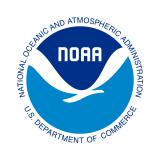Southeast Climate Monthly Webinar: October 24, 2023
Temperatures were cooler than normal for most of the region over the past month, but above average across parts of Tennessee, Alabama, and Florida, and much above average across the Caribbean. Precipitation was below average across most of the region; many places recorded less than half of their expected amounts. These dry conditions led to drought expansion across Alabama, Tennessee, Georgia, and the Carolinas; drought persisted in parts of the U.S. Caribbean and the Florida West Coast. Streamflows are near normal to below normal across most of the Southeast.
Looking Ahead: While the rest of the week looks dry for much of the region, warm and wetter weather is expected over the next several weeks. This is typically a quiet time of year when it comes to river flooding for the Southeast, and streamflows are expected to continue declining into November. El Niño conditions are expected to persist through the Northern Hemisphere winter and spring with a 75%–85% chance of a strong event. This El Niño is anticipated to increase the chances for a wet, cold season across most of the region. While wetter conditions should improve drought conditions, it could also bring an increase in streamflows and river flood threat.
Check out this month’s special presentation, “Marine Heat Waves and Impacts in the Southeast” from Chris Kelble and Ian Enochs at NOAA’s Atlantic Oceanographic and Meteorological Laboratory.
About This Webinar
The Southeast Climate monthly webinar series is hosted by the Southeast Regional Climate Center, the National Integrated Drought Information System (NIDIS), and the NOAA National Weather Service. These webinars provide the region with timely information on current and developing climate conditions such as drought, floods, and tropical storms, as well as climatic events like El Niño and La Niña. Speakers may also discuss the impacts of these conditions on topics such as agriculture production, water resources, wildfires, and ecosystems







